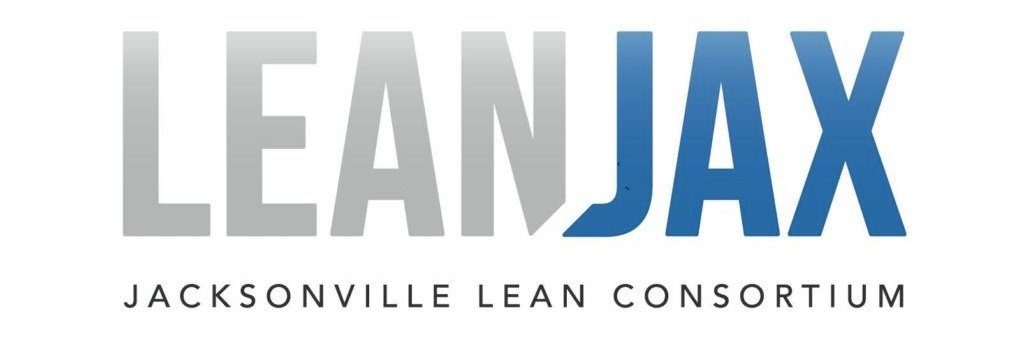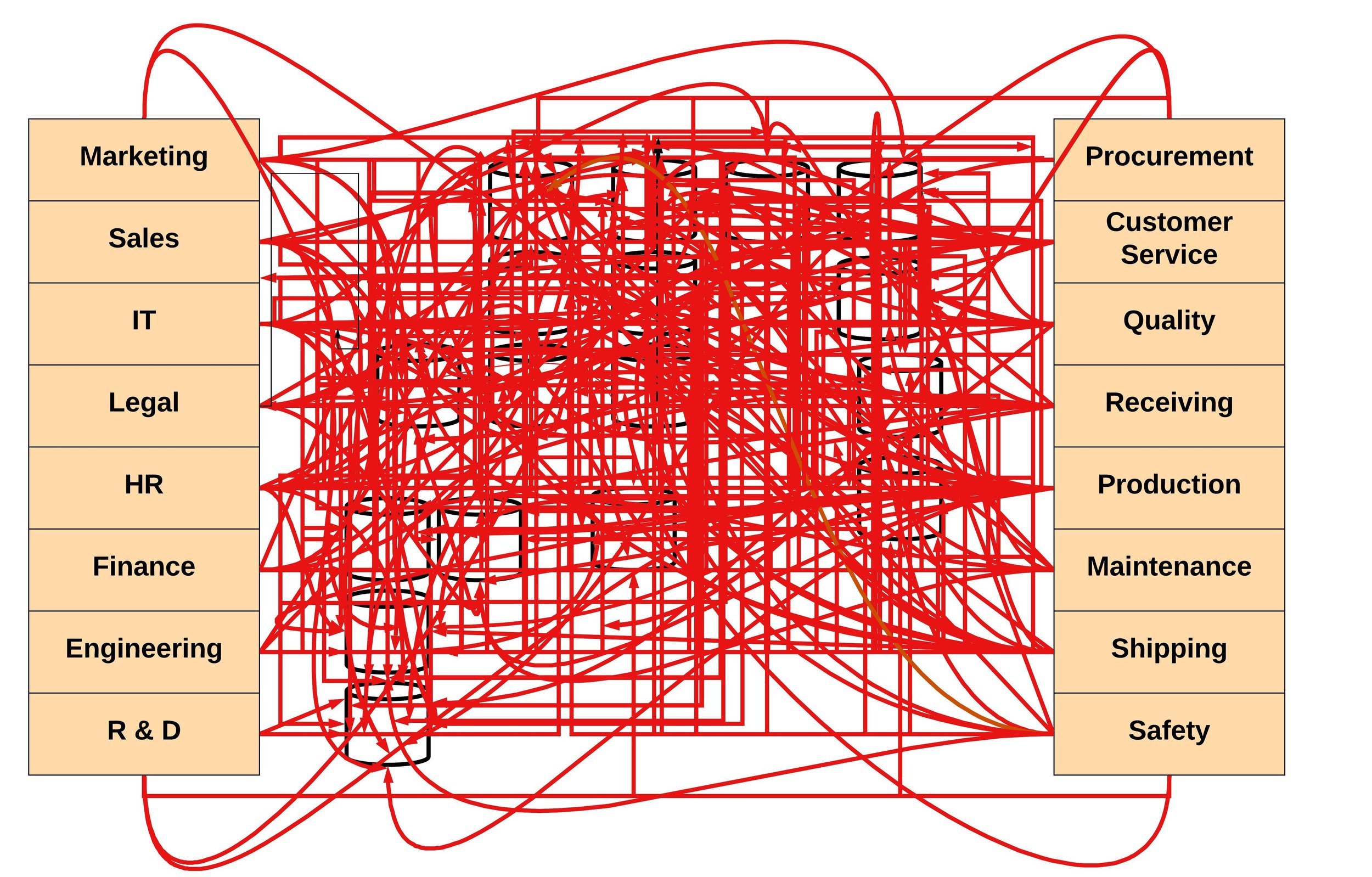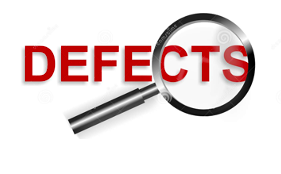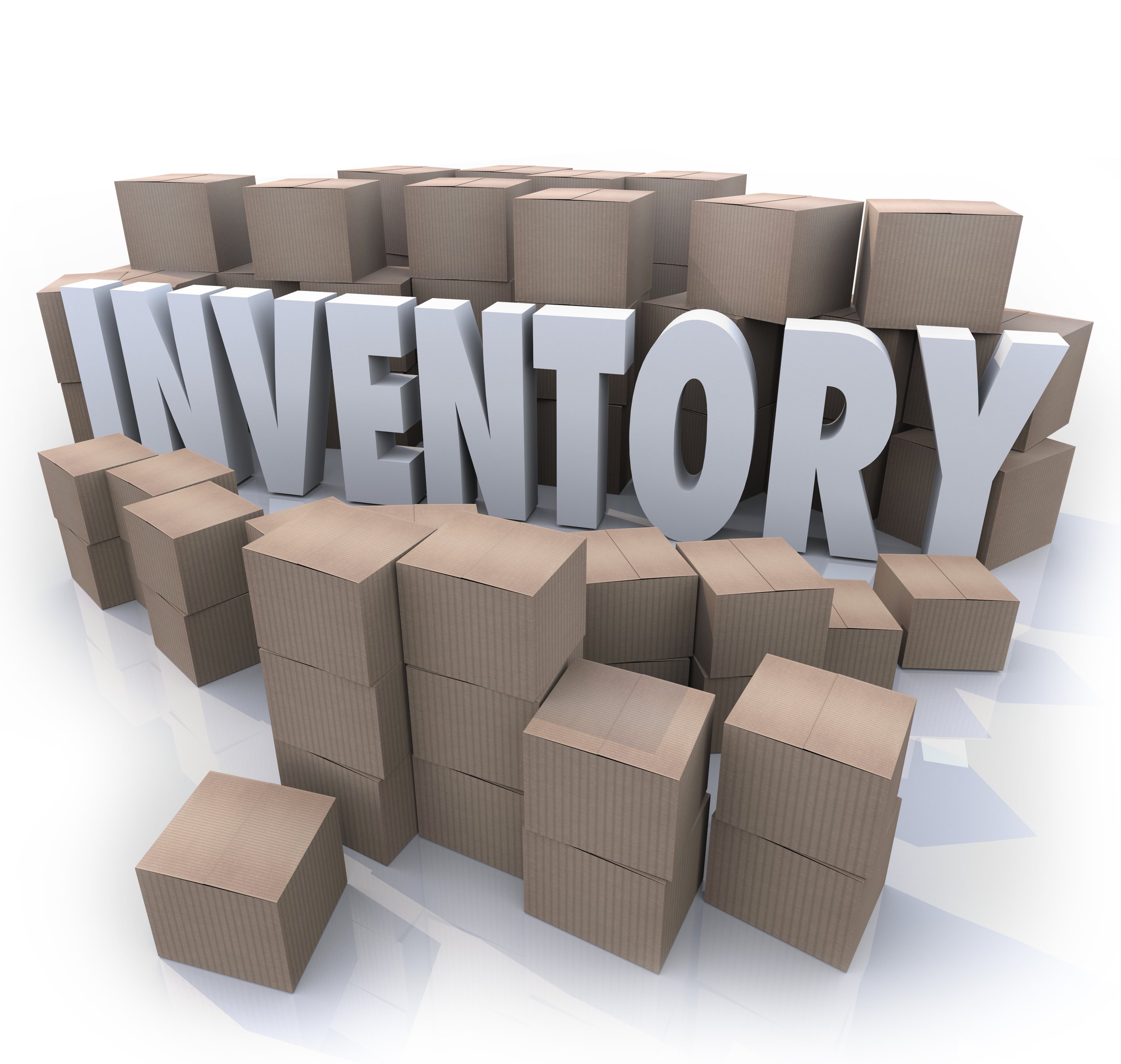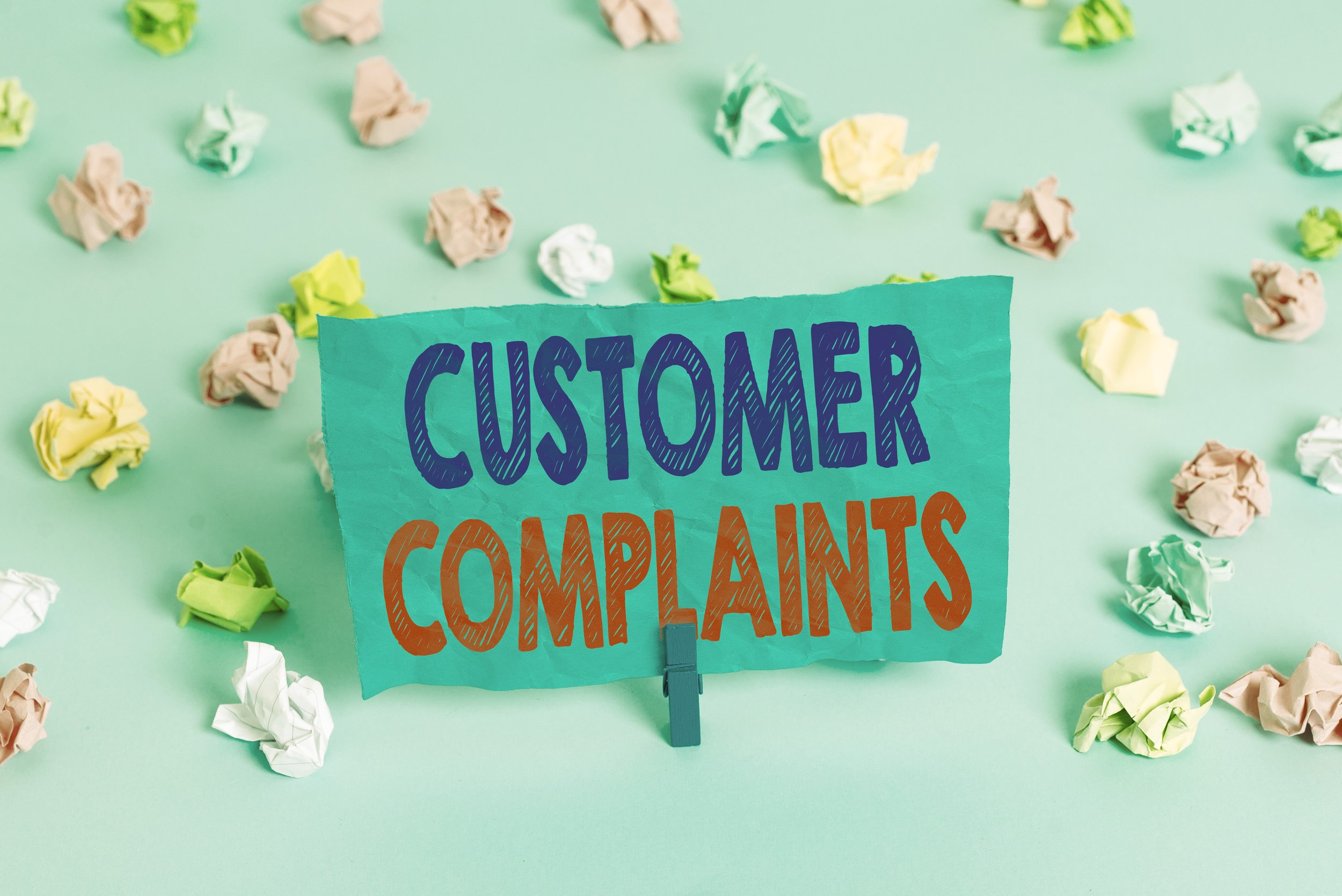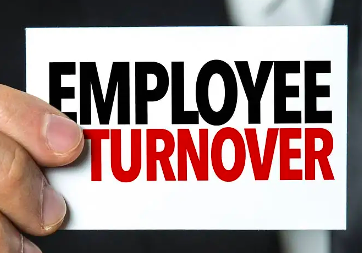Improving Digital Information Flow
Let’s take a live look at the digital information flow for a mid-size company during a typical morning.
How many IT systems can you spot? Prefer to give up because your head hurts and you are suddenly craving a plate of spaghetti for your working lunch?? Or maybe you lost your appetite.
Even the most enviable of cultures are plagued with hordes of unnecessary, duplicated, and erroneous information that is hastily sent in unread emails, hidden in spreadsheets, and stored haphazardly in multiple folders and locations within a myriad of legacy IT systems that were originally designed to program your VCR.
Internal communication is considered the number one pain point for employees in most corporate environments and this is compounded in knowledge work and transactional processes that rely on receiving information necessary to getting their work done almost exclusively through technology.
Detrimental Effects
For Workers
❌ Bombarded with excessive information—often unnecessary, unclear, incomplete, and inaccurate—resulting in multiple opportunities for errors and extensive delays.
❌ Struggle to obtain the right amount of critical information when they need it; losing multiple hours every day.
❌ Manage an excessive number of IT systems, causing a disproportionate percentage of their time spent non-value added tasks such as duplicating, reworking, and storing information, instead of the value-added tasks of creating, analyzing, and acting on information.
For Companies
Root Causes
❌❌ Poor internal communication between departments, compounded by lack of clear standards, ownership, and accountability; unnecessary/conflicting IT systems/applications; reliance on cumbersome manual processes; and variation in how information is prioritized, inputted, stored, shared, retrieved, and analyzed.
❌❌ Jumping to technological solutions prior to analyzing the company’s information flow.
❌❌ Prioritizing the quality of IT systems over the quality of information; no standards for prioritizing information.
Improvement Objectives
By using Lean methods including, value stream mapping, waste elimination, and A3 problem solving, companies can create and maintain a digital information flow that:
✅ Seamlessly transfer information into actionable knowledge: the knowledge required to make effective decisions and execute critical actions.
✅ Provide people with access to the right information, in the right quantity, at the right time.
✅ Significantly increase time spent on tasks that create value for internal and external customers.
✅ Break down organizational silos and promote enterprise-wide knowledge sharing.
✅ Ensure abnormal conditions/opportunities for error are readily visible and trigger immediate root cause analysis at the source.
✅ Drastically improve customer value, quality, delivery, safety, and cost.
✅ Make better decisions (based on accurate data and facts).
✅ Effectively leverage necessary technology to create a single source of truth--Earn the right to automate!
✅ Creates a baseline for sustainable improvements and flexibility to adapt to changing market conditions.
#leanthinking #informationflow #continuousimprovement
